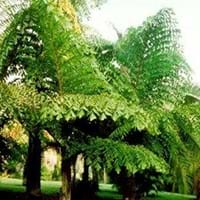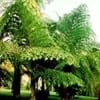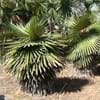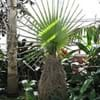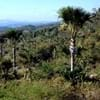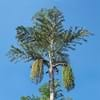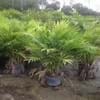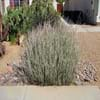What is
Life Span
Annual
Perennial
Type
Palm or Cycad
Flowering Plants, Fruits, Trees
Origin
Southeastern Asia, India
Anatolia, Asia, Europe, Iran, Maghreb, Morocco, Norway, The Hiamalayas
Types
Not Available
Flowering Cherries, Sour Cherries, Sand Cherries, Sweet Cherries, Capulin Cherries
Number of Varieties
Not Available
100
99+
Habitat
Forest edges
Forest edges, Wild, Woods
USDA Hardiness Zone
10-12
4-8
AHS Heat Zone
12-10
10-1
Sunset Zone
H1, H2, 23, 24
4, 5, 6, 7, 15, 16, 17
Habit
Upright/Erect
Upright/Erect
Information
Plant Size
Minimum Height
610.00 cm
99+
17.50 cm
99+
Minimum Width
300.00 cm
99+
17.50 cm
99+
Plant Color
Flower Color
Purple, Ivory
White
Flower Color Modifier
Bicolor
Not Available
Fruit Color
Purple
Red
Leaf Color in Spring
Light Green, Dark Green
Dark Green
Leaf Color in Summer
Light Green, Dark Green
Orange
Leaf Color in Fall
Light Green, Dark Green
Orange
Leaf Color in Winter
Light Green, Dark Green
Orange
Shape
Leaf Shape
Linear
Oblong
Thorns
No
No
Season
Plant Season
Spring, Summer, Fall, Winter
Spring, Summer
Growing Conditions
Sunlight
Full Sun, Partial Sun, Partial shade, Full Shade
Full Sun, Partial shade
Growth Rate
Medium
Medium
Type of Soil
Loam
Loamy, Well drained
The pH of Soil
Acidic, Neutral
Slightly Acidic
Soil Drainage
Well drained
Average
Bloom Time
Indeterminate
Early Spring, Spring
Repeat Bloomer
Yes
No
Tolerances
Not Available
Heat And Humidity, Not Available
Care
Where to Plant?
Ground
Ground
How to Plant?
Seedlings, Transplanting
Grafting, Seedlings, Transplanting
Plant Maintenance
Medium
Medium
Watering Plants
Watering Requirements
Does not require lot of watering, Use and maintain water-efficient soaker hoses, Use Mulches to help prevent water loss during hot and windy weather, Water in morning to avoid prompting diseases, Water twice a day in the initial period
Never Over-water, Over-watering can cause leaf problems or root diseases, Prefer drip-irrigation instead of Over-head watering, Water twice a day in the initial period
In Summer
Lots of watering
Lots of watering
In Spring
Moderate
Moderate
In Winter
Average Water
Average Water
Soil
Soil pH
Acidic, Neutral
Slightly Acidic
Soil Type
Loam
Loamy, Well drained
Soil Drainage Capacity
Well drained
Average
Sun Exposure
Full Sun, Partial Sun, Partial shade, Full Shade
Full Sun, Partial shade
Pruning
Remove damaged leaves, Remove dead branches, Remove dead leaves
Don't prune in the fall, Prune if you want to improve plant shape, Prune in late winter, Remove dead or diseased plant parts, Remove deadheads
Fertilizers
All-Purpose Liquid Fertilizer
All-Purpose Liquid Fertilizer
Pests and Diseases
Red blotch
Aphids, Bacterial Canker, Black Knot, Brown Rot, Caterpillars
Plant Tolerance
Drought
Drought
Facts
Flowers
Showy
Yes
Flower Petal Number
Single
Not Available
Fruits
Showy Fruit
Yes
Yes
Edible Fruit
No
Yes
Fragrance
Fragrant Flower
No
Yes
Fragrant Fruit
No
Yes
Fragrant Leaf
No
No
Fragrant Bark/Stem
No
No
Showy Foliage
Yes
No
Showy Bark
No
Yes
Foliage Texture
Bold
Not Available
Foliage Sheen
Glossy
Not Available
Evergreen
No
Yes
Invasive
Sometimes
No
Self-Sowing
Yes
No
Attracts
Birds
Birds
Allergy
Not Available
Swelling in the face
Benefits
Uses
Aesthetic Uses
Borders
Showy Purposes
Beauty Benefits
Not Available
Not Available
Edible Uses
Yes
Yes
Environmental Uses
Air purification
Air purification
Plant Benefits
Medicinal Uses
Not Available
Arthritis, Gout, Kidney problems, Rheumatoid arthritis, Swelling
Part of Plant Used
Sap, Stem
Flowers, Fruits
Other Uses
Used in making beverages
Wood is used for making furniture
Used As Indoor Plant
No
No
Used As Outdoor Plant
Yes
Yes
Garden Design
Feature Plant, Hedges, Mixed Border, Screening / Wind Break, Tropical
Not Available
Scientific Name
Botanical Name
CARYOTA mitis
Prunus avium
Common Name
Burmese Fishtail Palm, Fishtail Palm
Cherry Tree
In Hindi
Fishtail palm
चेरी का पेड़
In German
Fishtail palm
Kirschbaum
In French
Fishtail Palm
Cerisier
In Spanish
Fishtail palma
Cerezo
In Greek
ιχθυόφθαλμους παλάμη
κερασιά
In Portuguese
Fishtail palma
árvore de cereja
In Polish
Fishtail dłoni
wiśniowe drzewo
In Latin
fishtail palma
Cherry
Classification
Kingdom
Plantae
Plantae
Phylum
Not Available
Magnoliophyta
Class
Not Available
Magnoliopsida
Order
Arecales
Rosales
Family
Arecaceae
Rosaceae
Genus
Caryota
Prunus
Clade
Angiosperms, Commelinids, Monocots
Angiosperms, Eudicots, Rosids
Tribe
Caryoteae
Not Available
Subfamily
Coryphoideae
Not Available
Number of Species
13
99+
Not Available
|
||
|
||
|
